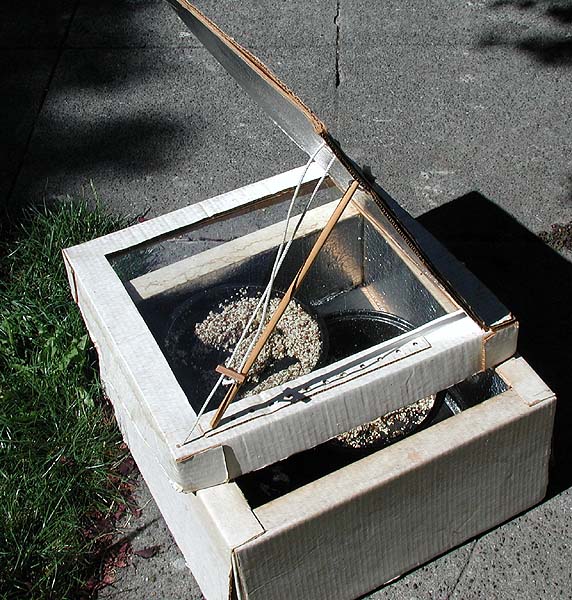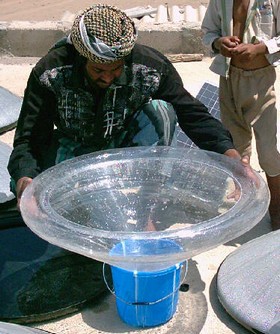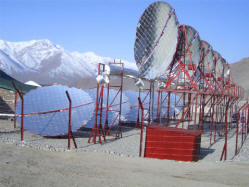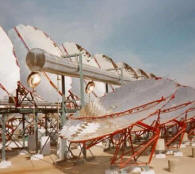One workshop which intrigued me in its outlook on the ideas of systemic applications was the solar cooker workshop. Virginio Mendonça & Eric Fedus showed how the solar cooker works. It is a relatively simple idea: you make an area which uses reflective material to focus sunlight onto a focal point, and this area heats up to high enough temperatures to cook food on. Below is an example of a very simple version of the solar cooker:
This version simply utilizes a cardboard with reflective Mylar, along with calculated angles of reflectivity, to heat cooking pots upto 130 degrees Celsius. However, as the two speakers explained, this technology need not be limited to cooking. Utlizing solar energy in this manner can be used to dry foods:
or distill potable water from unsanitary ground water sources:
Virginio and Eric then continued to explain how this technology can then be applied to an even bigger scope of applications, such as microconcentrators, which heat water that can then be used as a medium for heating houses and other spaces:
They also explained how this technology can also be expanded in scale. Many places in India have adopted parabolic solar condensers in large cooking centers. These parabolic solar cookers are used to heat pipes with water in them, turning it into steam. This steam is then used to cook up to 30,000 meals a day.
All of these applications evolved from the same principle. They all solve very different issues, but in a way which can be implemented systemically. It is our opportunity as designers to explore new ways to utilize newly found technologies, but also to re-explore old technologies from a different perspective and find innovative ways to create comprehensive and holistic solutions.






2 comments:
Count my vote for the simple technology of solar cooking, I think that it is very underutilized in a world that needs this valuable skill and art.
Even using it in the developed countries of the world; it would make a big difference in the mindset and outlook of the average person.
I will admit that I have a special interest in solar cooking, I work to educate people on the practicality and feasibility of using this great tool.
Thank you for letting me add my thoughts.
Nathan Parry
http://www.solarcooker-at-cantinawest.com
Great post, do you have any more information on the water cone.
Solar cooking is a fantastic way of not only cooking food but also sterilizing (boiling) water. The more people who promote solar cooking, the better.
Glad to see that cantinawest also has a wealth of information on the wonderful world of solar cooking on his web site as well.
Here is a post I wrote which you may find of interest, explaining how to build a parabolic solar cooker.
http://solreka.com/blog/solar-cooking/how-to-build-parabolic-solar-cooker/
Post a Comment